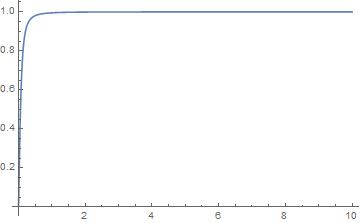Dear physics stack exchange,
I was looking over the darker non-mainstream physics wing of youtube when I came across a video with a person who gave a simple experiment to prove you could accelerate an electron to go faster than the speed of light. If you follow the link your see his apparatus and the key idea here being the use of a classical projectile problem. Given an apparatus with a distance $d$, electric field of strength $\textbf{E}_{o}$, charge $q$, mass $m$, and initial velocity $\textbf{v}$. Then,
$$ \textbf{v} = \langle v_{o} \cos(\theta) , v_{o} \sin(\theta) \rangle $$ $$ \textbf{E}_{o} = \langle 0 , E_{o} \rangle $$ $$ a_{net} = \frac{qE_{o}}{m}. $$
It would take $t = \frac{d}{v_{o} \cos{\theta}}$ to traverse the distance and acquire a final y-velocity of $v_{y}= at + v_{y_{o}} = \frac{qE_{o}d}{mv_{o} \cos(\theta)} + v_{o} \sin(\theta)$ so then the total end speed would be,
$$ |\textbf{v} | = \sqrt{(v_{o}\cos(\theta))^{2} + \left( \frac{qE_{o}d}{mv_{o} \cos(\theta)} + v_{o} \sin(\theta)\right)^{2}} .$$
From this equation he asserts you could find out what combination of initial angle or velocity could surpass the speed of light given you only need to come close to some large speed in the y-direction which if then combined with a non-zero x-velocity would yield a speed greater than $c$.
My question being what velocity would special relativity predict with a constant downward electric force or even better what would its trajectory be? I have looked over the wikipedia page on relativistic acceleration/forces but i'm always at a loss with determining stand alone equations in terms of coordinate/proper time for trajectories, especially ones that are not in a single direction. Any help or information is much appreciated.
Sincerely, A freshman going on sophomore year



